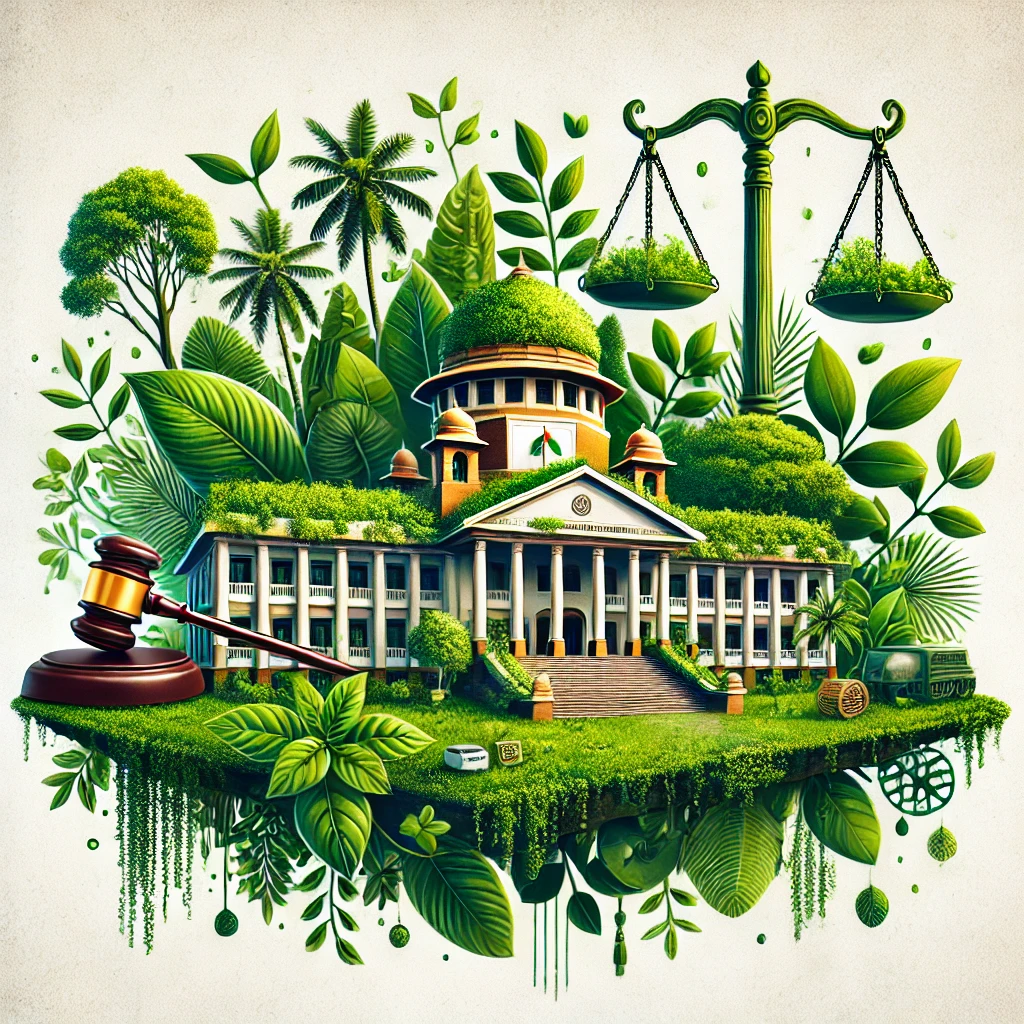Environmental laws at Iran
Iran has developed a comprehensive set of environmental laws and regulations to address a range of environmental issues, such as air and water pollution, deforestation, desertification, biodiversity conservation, and the impacts of climate change. These laws are designed to ensure sustainable use of natural resources, protect ecosystems, and improve public health. Below is an overview of key environmental laws in Iran:
1. The Constitution of the Islamic Republic of Iran (1979)
Article 50 of the Iranian Constitution is a fundamental provision regarding environmental protection. It states:
"The protection of the environment is a public duty. The government must protect the environment in a way that prevents its destruction and degradation for future generations."
This article provides the constitutional basis for environmental policies, emphasizing the responsibility of the government and citizens to protect natural resources and promote sustainability.
2. Environmental Protection Law (1974)
The Environmental Protection Law, enacted in 1974, serves as a key framework for protecting the environment in Iran. It established the legal basis for creating the Department of Environment (DOE), which is the main regulatory body for environmental management in the country.
Key provisions of the law include:
Pollution Control: The law provides for the regulation of pollution in air, water, and soil, and mandates that industries implement pollution control measures.
Environmental Impact Assessments (EIA): The law requires that all major development projects undergo an Environmental Impact Assessment to evaluate their potential environmental effects.
Wildlife and Habitat Protection: The law promotes the protection of wildlife and their habitats, establishing national parks, wildlife reserves, and protected areas.
3. Department of Environment (DOE) Law (1974)
The Department of Environment (DOE) is responsible for enforcing environmental laws in Iran. It was established by the Environmental Protection Law and is tasked with overseeing the country's environmental regulations, including pollution control, biodiversity conservation, and sustainable resource management.
The DOE also plays a key role in implementing Iran's international environmental commitments and monitoring the state of the environment.
4. The Law on Protection of the Environment (1995)
The Law on Protection of the Environment addresses the conservation of Iran’s natural resources, particularly biodiversity, forests, and wetlands. It was enacted to further strengthen environmental protection, focusing on the following:
Environmental Licensing: Requires environmental licenses for industrial projects, which ensures that environmental considerations are incorporated into the planning process.
Pollution Control: Strengthens control over industrial emissions, waste management, and water discharge to prevent environmental degradation.
Biodiversity Protection: Includes provisions for the conservation of endangered species and the protection of Iran's rich biodiversity, such as the Asiatic cheetah and Persian leopard.
5. The Forests and Rangelands Protection Law (2001)
The Forests and Rangelands Protection Law is a critical piece of legislation aimed at preventing the degradation of Iran's forest and rangeland ecosystems, which are vital to both biodiversity and climate stability.
Key aspects of the law include:
Forest Conservation: Prohibits illegal logging, overgrazing, and deforestation activities that lead to the destruction of forests and rangelands.
Reforestation and Afforestation: Encourages initiatives to restore degraded forest and rangeland areas, especially in regions facing desertification.
Sustainable Land Use: Promotes sustainable land management practices for the use of forests and rangelands.
6. The Law on Conservation and Improvement of the Environment (2014)
This comprehensive law focuses on improving environmental quality, addressing issues like air and water pollution, and protecting natural ecosystems.
Key provisions of the law include:
Air Quality Control: Establishes standards and measures to reduce air pollution, particularly in urban areas like Tehran, which experiences severe air pollution.
Water Conservation: Implements strategies to improve water use efficiency and prevent overexploitation of water resources, especially given the country’s water scarcity challenges.
Waste Management: Includes measures for managing and reducing waste, particularly hazardous waste, and encouraging recycling.
Environmental Health: Focuses on protecting public health from environmental hazards like toxic pollutants and unsafe water.
7. The Wetlands Protection Law (1975)
This law was enacted to conserve Iran's wetlands, which are critical habitats for migratory birds, aquatic life, and other wildlife. It is aligned with Iran’s commitment to the Ramsar Convention, an international treaty focused on the conservation of wetlands.
Key features of the law include:
Protection of Wetland Ecosystems: Designates key wetlands for protection, ensuring their sustainable use and preventing drainage or degradation.
Conservation of Biodiversity: Protects species that depend on wetland ecosystems, including migratory birds and fish species.
Sustainable Management: Promotes sustainable practices for the use of wetland resources, including water and plant harvesting.
8. The Law on the Control of Chemical and Hazardous Substances (2003)
This law regulates the import, production, use, and disposal of hazardous chemicals in Iran. It is designed to protect human health and the environment from the risks posed by toxic substances.
Provisions of the law include:
Regulation of Hazardous Chemicals: Establishes guidelines for the safe handling and disposal of hazardous chemicals and industrial waste.
Pollution Control: Requires companies to implement pollution control measures to prevent contamination of air, water, and soil.
Monitoring and Reporting: Mandates regular monitoring of chemical usage and disposal and requires companies to report the use of hazardous materials to authorities.
9. The Law on Water Resources (1982)
The Water Resources Law regulates the management of Iran’s water resources, which are crucial for agriculture, industry, and drinking purposes.
Key provisions include:
Water Allocation: Regulates the allocation of water resources, especially in times of scarcity, to ensure equitable access and sustainable use.
Water Quality Standards: Establishes quality standards for drinking water, wastewater, and industrial effluents.
Conservation Measures: Encourages water-saving technologies and sustainable agricultural practices to reduce water wastage.
10. The Climate Change Mitigation and Adaptation Policy (2015)
Iran has developed a Climate Change Policy to address the impacts of climate change, particularly in terms of rising temperatures, droughts, and extreme weather events.
Key goals of the policy include:
Mitigation: Reducing greenhouse gas emissions, particularly through the promotion of renewable energy, energy efficiency, and sustainable land use practices.
Adaptation: Developing strategies to adapt to the impacts of climate change, including improving water management, protecting biodiversity, and building climate-resilient infrastructure.
International Cooperation: Strengthening cooperation with other countries and international organizations to address global climate challenges, including Iran's commitment to the Paris Agreement on climate change.
11. Environmental Crime and Penalty Laws
Iran has established laws that penalize violations of environmental regulations, particularly in cases of illegal logging, pollution, and wildlife trafficking.
Penalties for violating environmental laws include fines, criminal charges, and potential imprisonment, particularly for activities such as illegal logging, unauthorized dumping of industrial waste, and the poaching of protected species.
Enforcement of these laws is carried out by the Department of Environment (DOE), in cooperation with local authorities and law enforcement agencies.
12. International Environmental Commitments
Iran is a signatory to several international environmental treaties that guide its domestic environmental policies and practices:
The United Nations Framework Convention on Climate Change (UNFCCC) and the Paris Agreement: Iran is committed to addressing climate change through emissions reduction and climate adaptation strategies.
Ramsar Convention on Wetlands: Iran has made commitments to conserve and sustainably manage its wetlands, which are critical for biodiversity and water resources.
Convention on Biological Diversity (CBD): Iran participates in global efforts to protect biodiversity and promote sustainable use of biological resources.
Enforcement and Challenges
Enforcement: The Department of Environment (DOE) is the primary government body responsible for enforcing environmental laws in Iran. It monitors pollution levels, manages protected areas, and ensures compliance with environmental regulations.
Challenges: Despite the strong legal framework, Iran faces several challenges in enforcing environmental laws, including:
Air Pollution: Major cities like Tehran experience high levels of air pollution, mainly due to vehicle emissions and industrial activity.
Water Scarcity: Iran faces severe water scarcity, exacerbated by climate change, over-extraction of groundwater, and inefficient water management practices.
Biodiversity Loss: Deforestation, habitat degradation, and illegal hunting threaten Iran's rich biodiversity.
Corruption and Enforcement Gaps: Limited resources and institutional capacity sometimes hinder the effective implementation and enforcement of environmental laws.
Conclusion
Iran has a well-established legal framework for environmental protection, covering pollution control, biodiversity conservation, resource management, and climate change mitigation. However, challenges such as pollution, water scarcity, and deforestation persist, requiring continued efforts to strengthen enforcement, raise public awareness, and promote sustainable practices across sectors. Continued collaboration with international bodies and the adoption of green technologies will be crucial for addressing Iran's environmental challenges and achieving long-term sustainability.




























0 comments